Darth Vader Death Ray Buildings
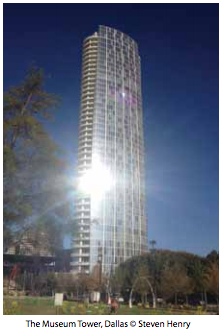 I learned several things early in my scouting days. One was that if I focused sunlight through a magnifying lens, I could start a fire, melt plastic or burn my name into a 2x4. Another thing that I learned was how to build a reflecting oven to cook a meal when we were camping out. Never did I think that I would be reading a paper about the ways that building designs could do the same things.
I learned several things early in my scouting days. One was that if I focused sunlight through a magnifying lens, I could start a fire, melt plastic or burn my name into a 2x4. Another thing that I learned was how to build a reflecting oven to cook a meal when we were camping out. Never did I think that I would be reading a paper about the ways that building designs could do the same things.
We have written about the Vdara Hotel in Las Vegas that was reflecting sunlight and melting plastic cups and the plastic parts of Jaguars parked nearby. We have heard about the reflected sunlight from the Museum Tower in Dallas streaming into the nearby Nasher Museum and endangering priceless art. I have found a great paper written by Vicente Montes-Amores and published by the Council on Tall Buildings and Urban Habitat (CTBUH) that speaks to the issues involved and ways to avoid the potential financial liabilities for making mistakes. For those of you who are developing, designing and building towers these days, it is a good read.
For those of you who live in or near those “death ray” towers, you will be interested in why your azaleas are being fried. [node:read-more:link]


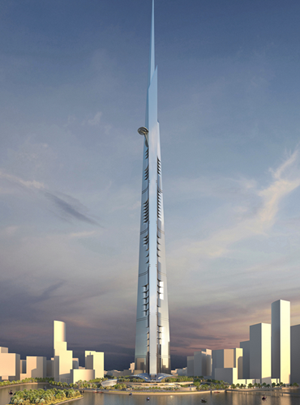
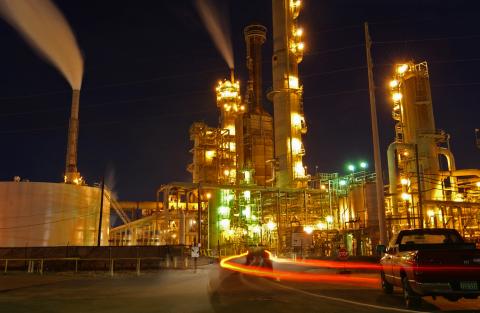 I have written recently
I have written recently When architectural designs hit Popular Mechanics Magazine, I know that they must be amazing. Robin would certainly have said Holy Smokes or some equally pithy comment to Batman about the Shanghai Tower and its massive, and I mean massive, “Tuned Mass Damper” or “Harmonic Absorber.”
When architectural designs hit Popular Mechanics Magazine, I know that they must be amazing. Robin would certainly have said Holy Smokes or some equally pithy comment to Batman about the Shanghai Tower and its massive, and I mean massive, “Tuned Mass Damper” or “Harmonic Absorber.” According to Breitbart
According to Breitbart The team at Software Advice, a construction management
The team at Software Advice, a construction management 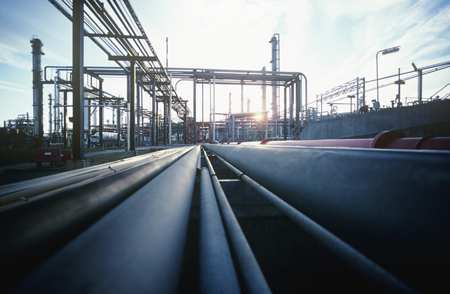 The
The 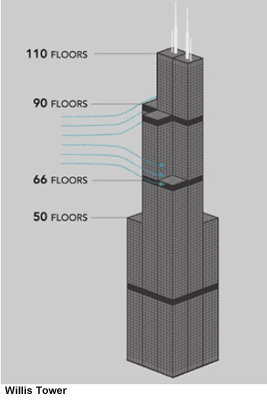 If you get motion sickness, don’t go to the 108-story Willis (Sears) Tower in Chicago on a windy day. The building sways so much that, not only will you get motion sickness, the elevator that you are riding in might get shut down or stuck in the shaft until the wind subsides. This, according to Justin McGar in a
If you get motion sickness, don’t go to the 108-story Willis (Sears) Tower in Chicago on a windy day. The building sways so much that, not only will you get motion sickness, the elevator that you are riding in might get shut down or stuck in the shaft until the wind subsides. This, according to Justin McGar in a 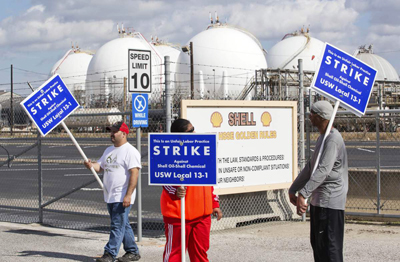 I remember the first time I crossed a strike picket line. It was at a construction site for a Holly Sugar Beet processing plant in Hereford, Texas. The electricians union who wanted higher pay for their workers called the strike. The picket line was comprised of my neighbors who I carpooled the 90 miles to the construction site with most days. Once they struck, they refused to give me a ride and were suddenly calling me a scab even though I worked in the engineer’s office on the drafting board. Serious stuff for them. Scary for me. Shut down the site for a week. That was then, this is now.
I remember the first time I crossed a strike picket line. It was at a construction site for a Holly Sugar Beet processing plant in Hereford, Texas. The electricians union who wanted higher pay for their workers called the strike. The picket line was comprised of my neighbors who I carpooled the 90 miles to the construction site with most days. Once they struck, they refused to give me a ride and were suddenly calling me a scab even though I worked in the engineer’s office on the drafting board. Serious stuff for them. Scary for me. Shut down the site for a week. That was then, this is now.